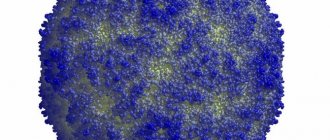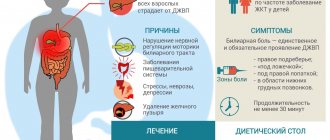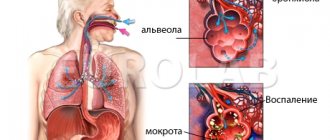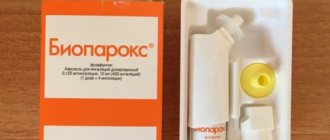The urinary system plays an important role in the proper functioning of the body.
Filtration of blood by the kidneys, removal of excess fluid with metabolic products, maintaining water-salt balance in the body, regulation of blood pressure - these are not all the processes that can be disrupted when inflammation occurs.
Urinary tract infections can affect both adults and children, causing functional impairment and significantly reducing quality of life.
Urinary tract infections
The concept of “Urinary Tract Infections” (UTI) unites a group of inflammatory diseases of the urinary system, which develop when an infectious pathogen enters the body.
The organs of the urinary system include:
- kidneys - a paired organ responsible for filtering blood and producing urine;
- ureters - hollow tubes through which urine flows into the bladder;
- the bladder is a hollow organ, a smooth muscle reservoir in which urine accumulates;
- The urethra (or urethra) is a tubular organ that removes urine from the body.
Despite the fact that the urinary tract is normally sterile, any organ can be susceptible to the development of an infectious process. A special feature is that in most cases, inflammation is transmitted between organs along the ascending (from the urethra up to the kidneys) or descending pathway (from infected kidneys to the bladder).
Features of Chronic forms
Chronication of UTI occurs mainly as a consequence of the acute course of the disease. The disease is then classified as a chronic infection:
- When it appears two or more times within six months.
- When signs of infection do not go away within the next two days after starting therapy.
- When infectious symptoms do not disappear within 2 weeks of treatment.
The reason for this could be many factors, including:
- incorrectly selected therapy for the treatment of acute infectious processes;
- insufficiently long course of treatment;
- the presence of concomitant pathologies that provoke stagnation of urine (urinary tract infections, adenomatous tumors in the prostate, narrowing of the urinary lumens);
- lack of intimate hygiene.
Exacerbation of infection is provoked by acute infectious processes in adjacent organs, diseases that have a suppressive effect on the immune system - ARVI, influenza, respiratory system infections.
Lack of timely treatment for chronic UTI leads to complete failure of renal function.
Classification of the disease
There are several classifications of infectious diseases of the urinary system.
By localization:
- upper urinary tract infections, these include inflammation of the kidneys (pyelonephritis), ureters;
- lower urinary tract - bladder (cystitis) and urethra (urethritis).
According to the nature of the disease:
- Uncomplicated . They occur without structural changes in the tissues of the urinary apparatus, in the absence of obstructive uropathy or other concomitant diseases.
- Complicated . They occur against the background of difficulty urinating, when using instrumental methods of examination or treatment (catheterization).
Depending on the location of infection by the pathogen:
- Hospital . Also known as hospital-acquired or nosocomial. They develop when an infectious pathogen enters the body while in a medical institution.
- Out-of-hospital . They develop in an outpatient setting under circumstances favorable for infection.
According to the nature of symptoms:
- Clinically significant infections . They are characterized by obvious, often intense symptoms.
- Asymptomatic infections. The clinical picture is weak, the symptoms slightly worsen the patient’s quality of life.
Diagnostic examination
The diagnostic search begins with a physical diagnosis, history, and symptom assessment. All patients are prescribed detailed laboratory monitoring of urine:
- Using rapid test strips for the quantitative determination of blood cells (erythrocytes, leukocytes).
- Rapid test for nitrate reductase analysis.
- Cultural research to identify the number of uropathogens - identification of bacteriuria and their resistance to antibiotics.
- Ultrasound and examination of the upper urinary system by plain radiography - to exclude obstructive changes in the urethral tract and urolithiasis.
- As an additional diagnosis (if necessary), to exclude the development of abnormalities of the urinary excretory tract and abscess, a study is prescribed using excretory urography, CT, and dynamic nephroscintigration.
Factors contributing to the development of the disease
Urinary tract infections are widespread diseases and are among the top five most common infectious diseases. Here are some signs:
- Failure to comply with personal hygiene rules . The perineal area is anatomically designed in such a way that pathogenic pathogens can migrate across the skin from the anus or vagina (in women). Ignoring hygiene rules and unclean hands when urinating can lead to microbial contamination.
- Hypothermia . A cold of the ureter is one of the main enemies of the entire urinary system.
- Decreased immunity . This condition is typical for older people, patients suffering from immunodeficiency and severe chronic diseases.
- Presence of other infectious diseases . For example, the causative agent of sore throat, streptococcus, can cause severe pyelonephritis if it enters the kidneys with blood.
- Inpatient treatment or surgery . In the case of resuscitation or intensive care, it becomes necessary to catheterize the bladder, which violates the sterility of the urinary system and opens the gates of infection.
- Anomalies in the development of the organs of the urinary system. Pathologists can diagnose the disease while the child is still pregnant.
- Obstructive uropathy is difficulty in excreting urine due to urolithiasis, prostatitis or other reasons.
- Unprotected sexual contacts . Some sexually transmitted infections can reproduce in the urinary system and can cause urethritis or cystitis.
The course of UTI is characterized by a number of features depending on the gender and age of the patient:
- Women suffer from infectious diseases of the urinary system much more often than men. This is explained by the proximity of the urethra, vagina and anus, which contributes to the spread of pathogenic microflora. Also, the length of the urethra in women is much shorter than in men, because microorganisms, if treatment is not started in a timely manner, easily reach the bladder, provoking the development of cystitis.
- Men Women suffer from UTIs less often. Due to physiological characteristics, the urethra in men is much longer than in women. Therefore, infectious pathogens reach the bladder or kidneys with less frequency. But the course of the disease is almost always more severe, with intense pain, a high risk of complications such as prostatitis, etc.
In the age group from 20 to 50 years, women are more likely to experience UTI problems. But in the category after 50 years, the situation changes: at this age, the frequency of “male” diseases (prostatitis, adenoma) increases, which can cause complications and spread of infection to the organs of the urinary system.
Use of antibiotics
In most cases, due to untimely identification of the disease in children and adults, there is a need to prescribe antibacterial agents. Penicillin antibiotics are predominantly prescribed. Penicillin is used to treat pyelonephritis during pregnancy. In adolescence, macrolides are used, and in adults, in addition to penicillins, cephalosporin antibiotics are prescribed. Cephalosporins make it possible to treat a person for two weeks, which promotes effectiveness and rapid recovery.
For various complications, gentamicin is used, but only in men and women under 60 years of age, since treatment with the drug causes deafness in older people. For children, drugs of the aminoglycoside group are prohibited. Antibiotics are prescribed by injection for severe forms of inflammatory processes of the genitourinary system. Drugs of the nitrofuran series are considered more gentle on the body and are used in children of all ages.
Pathogens and ways of their penetration into the body
Different types of microorganisms can provoke the appearance and development of inflammation in the organs of the urinary apparatus:
- bacteria (Escherichia coli, ureaplasma, gonococci, streptococci, Trichomonas, listeria, staphylococci);
- mushrooms (yeasts of the genus Candida);
- viruses (herpetic viruses, papillomaviruses, cytomegalovirus).
The most common causative agent of UTI is the gram-negative bacterium Escherichia coli (E. coli). This bacterium is classified as opportunistic and is a normal component of the intestinal microflora.
If hygiene procedures are neglected, improper washing of the perineum (from the anus forward), in case of a drop in the body's defenses (hypothermia, the presence of viral diseases), severe forms of dysbacteriosis, E. coli begin to actively multiply in the skin and can migrate to the urethral mucosa, developing which causes inflammation.
There are several possible ways of penetration and spread of pathogens in the urinary tract:
- Contact . Unprotected sexual intercourse (vaginal or anal), migration along the skin from the anus, catheterization, cystoscopy.
- Hemorrhagic and lymphogenous . Entry of the pathogen through the system of body fluids (from the blood or lymph) in the event of the presence of infectious foci in the body. For example, carious teeth, tonsillitis, sinusitis, pneumonia (against the background of an advanced viral infection, a pathogenic pathogen can penetrate the bladder mucosa - hemorrhagic cystitis develops).
- Descending . Movement of the pathogen from the kidneys through the ureters, bladder to the urethra.
- Rising . Infectious inflammation spreads from bottom to top: from the urethra to the kidneys.
Newborns are prone to developing UTIs due to possible birth defects, underdevelopment or late formation of some parts of the urinary system (urethral valves, ureteric orifice). The occurrence of infectious and inflammatory diseases is possible due to improper use of diapers.
What causes inflammation
In order for the urinary tract to become infected, it is enough not to comply with one of the main factors:
- Personal hygiene.
- Private change of different partners.
- Neglect general health.
The infection provokes inflammation at the time of decline in immune activity or in the presence of active provocations. Main causes of inflammation:
- frequent sexual intercourse, even if with a regular partner;
- anal sex;
- the use of methods of protection that irritate the ureteral mucosa;
- taking certain birth control pills;
- ingestion of E. coli (candidiasis);
- uncontrolled and unreasonable use of any group of antibiotics;
- pregnancy;
- diabetes of any kind;
- sexually transmitted infections (gonococci, trichomoniasis).
In fact, in most cases, human carelessness becomes the cause of diseases such as cystitis, urethritis and even pyelonephritis.
Manifestation of symptoms
Clinical manifestations of UTI can appear already at the initial stage of the disease. But the process of infectious inflammation can also be asymptomatic for a long time.
A urinary tract infection can present with various symptoms:
- pain in the pelvic area, lower back, side;
- itching in the urethra;
- burning sensation, pain, difficulty urinating;
- increased urge to urinate;
- uncharacteristic liquid discharge from the bladder (clear, serous, greenish-purulent);
- hyperthermia, chills, fever;
- change in odor and color of urine.
In children, especially younger children, the symptoms of UTIs may be even more vague than in adults.
Children under 1.5-2 years old cannot indicate the location of pain, they become more tearful and restless.
Parents may notice an increase in urination, traces of unusually colored urine on the diaper, and an increase in body temperature.
Diagnostic methods
A preliminary diagnosis is made after an analysis of the patient’s complaints by a therapist or urologist. To confirm the diagnosis and draw up a set of treatment measures, the following are prescribed:
- general clinical analysis of blood and urine;
- biochemical analysis of blood and urine (metabolic indicators such as urea, creatinine, and some enzymes characterize kidney activity);
- bacteriological culture of urine or PCR analysis (to determine the nature of the causative agent of the disease);
- instrumental research methods (cystoscopy, biopsy, urography, X-ray contrast studies, ultrasound of the kidneys and bladder).
Timely and comprehensive diagnosis makes it possible to identify the disease at an early stage and prevent the spread of the inflammatory process.
Methods of therapy
The main goal of therapeutic measures for urinary tract infections is to suppress the infectious-inflammatory process and eliminate the pathogen. In the treatment of UTIs, drugs from different groups of antibacterial agents are used:
- Sulfonamide drugs . This group includes Etazol, Urosulfan, and combination drugs (Biseptol). The use of sulfonamides shows high efficiency; they are excreted in the urine, showing high clinical concentrations in the urinary system, and have low toxicity to the kidneys.
- Nitrofuran derivatives. Furazolidone, Negram, Nevigramon, Furagin are used orally, Furacilin solutions are used for washing. Nitrofurans are widely used in the treatment of UTIs, especially if the microorganisms are resistant to other antibacterial drugs. They are active against gram-positive and gram-negative bacteria, blocking their cellular respiration. However, in the treatment of chronic, sluggish forms, nitrofurans show weaker effectiveness.
- Antibiotics . This group of drugs is the drug of choice when a doctor draws up a treatment program. It may take 3-7 days from the moment samples are submitted for analysis until results are obtained identifying the pathogen. In order not to waste time, the doctor prescribes a broad-spectrum antibiotic. Fluoroquinolones are most often used to treat UTIs. Drugs in this group include Norfloxacin (Nomitsin), Ofloxacin (Oflobak, Zanotsin), Ciprofloxacin. In addition, penicillins (Augmentin), tetrazincines (Doxycycline), and cephalosporins of the second and third generations (Ceftriaxone, Cefixime) are prescribed for the treatment of UTIs.
To prevent the development of fungal infections, antimycotic agents (Fluconazole) are added.
As part of the treatment complex, antispasmodic drugs are prescribed (to restore urinary function), non-steroidal anti-inflammatory drugs, and combination drugs of herbal origin (Canephron).
Kidney herbal preparations, teas, and cranberry juice are widely used. Additionally, physical therapy sessions may be prescribed.
During treatment, it is necessary to follow a diet with limited consumption of sour, spicy, salty foods, alcoholic and carbonated drinks, coffee and chocolate. These foods, by changing the pH of urine, can cause irritation of the mucous membrane of the urinary system.
ethnoscience
In parallel with medications, it is recommended to use various herbal mixtures that have antimicrobial and anti-inflammatory properties. One of the undeniable advantages of such herbs is that they are completely devoid of side effects, which cannot be said about antibiotics, right? Some of the most popular herbs that have an antibacterial effect include: bearberry, chamomile, wintergreen.
It is recommended to take herbs for 2 weeks 4-5 times a day.
Consequences of the disease
Urinary tract infections, affecting the mucous membrane, can cause serious consequences for the entire body. Pain and frequent urge to urinate greatly impair the patient’s quality of life.
If treatment is incorrectly selected or the doctor’s orders are not followed, the UTI returns again, causing severe relapses.
Against the background of progressive pyelonephritis, renal failure, deformation of the ureters (prolapse of the kidney), and impaired urine excretion (reflux) may develop. Having a UTI while carrying a child can cause spontaneous abortion at any stage.
Preventive measures
Preventive measures to prevent UTIs consist of lifestyle adjustments and following certain rules:
- timely treatment of infectious foci in the body;
- compliance with hygiene standards;
- prevent hypothermia of the body;
- empty your bladder on time;
- using condoms during sexual intercourse.
Urinary tract infections are not a strict indication for hospitalization of the patient; outpatient treatment shows high effectiveness if timely consultation with a doctor.
But by not following medical prescriptions and ignoring the symptoms of the disease, you can cause the disease to spread to neighboring organs and provoke the transition of a UTI to a chronic form.
Treatment
When treating infections, one thing is important: complete medical supervision and no self-medication.
Antibacterial therapy is most often indicated, and certain antibiotics are prescribed.
Usually these are: Ampicillin, Bactrim, Amoxiclav, nitrofurans. For more complex forms or resistance of bacteria to treatment, combination is allowed.
Detailed treatment is prescribed according to indicators. For example, if salts are present, lavage of the bladder and kidneys may be prescribed.
It is imperative to follow a diet that minimizes the intake of salts. Maximizing fluid intake is one of the main steps of treatment. Any drink is allowed here, but it is especially useful to take cranberry juice or rosehip decoction. These berries contain the maximum collection of beneficial vitamins; they provide a mild diuretic effect. Moreover, this allows you to avoid taking special diuretics, which wash out not only toxins, but also beneficial substances. If there are kidney stones that can provoke infection, the possibility of crushing them or removing them non-surgically is considered. But it all depends on the type and size of the stones themselves.
You cannot self-medicate; it is contraindicated as it is life-threatening.











